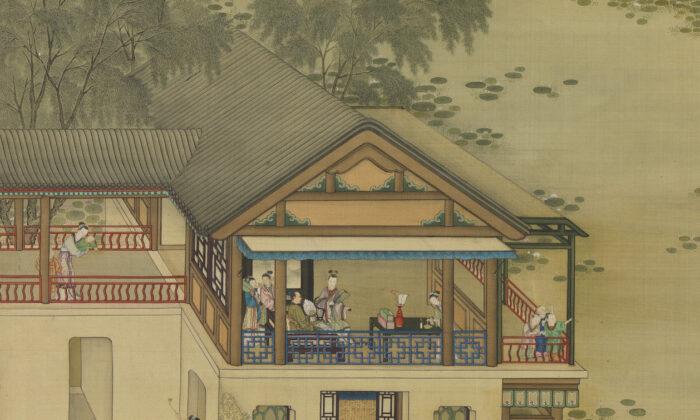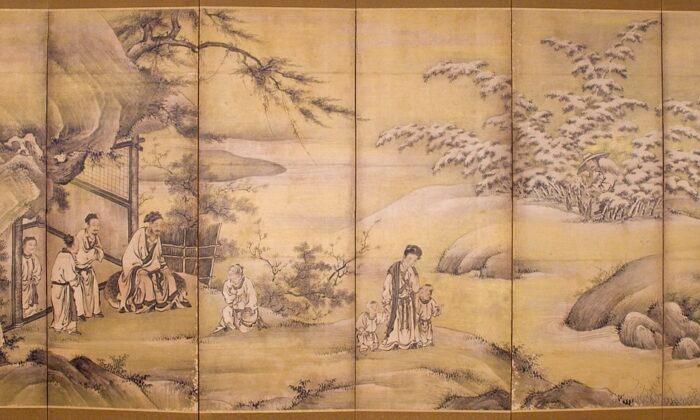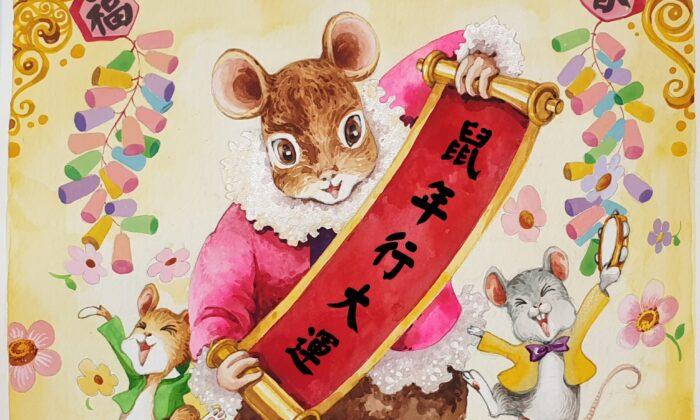The Chinese character 聖 (shèng) refers to a sage or a saint, or the quality of being holy, sacred, or revered.
聖 (shèng) is an ideogrammic (associative) compound, created from the combination of three other characters.
壬 (rén) on the bottom depicts a scholar, gentleman, or soldier (士, shì/shi) carrying a load on a pole (丿, piě). 口 (koǔ/kou) on the top-right is the character for mouth, and 耳 (ěr) on the top-left is the character for ear. Together they depict a person with superior speaking and listening skills.
Examples of terms that use 聖 (shèng) include 神聖 (shén shèng), divine, holy, or sacred; 聖蹟 (shèng jī), a miracle; 聖潔 (shèng jié), holy or pure; and 聖誕 (shèng dàn) or 聖誕節 (shèng dàn jié), Christmas, where 誕 (dàn) means birth and 節 (dàn jié) means festival.
The title 至聖先師 (zhì shèng xiān shī), Supreme Sage (至聖, zhì shèng) and Foremost Teacher (先師, xiān shī), refers to Confucius (551–479 B.C.).
There are three honoured art sages in China: Calligraphy Sage (書聖, shū shèng) Wang Xizhi (王羲之) (303–361) of the Eastern Jin Dynasty (317–420), Painting Sage (畫聖, huà shèng) Wu Daozi (吳道子) (about 686–760) of the Tang Dynasty (618–907), and Poetry Sage (詩聖, shī shèng) Du Fu (杜甫) (712–770) of the Tang Dynasty.
Lu Yu (陸羽) (733–804), also of the Tang Dynasty, is recognized as the Tea Sage (茶聖, chá shèng), and Zhang Zhongjing (張仲景) (about 150–219) of the Eastern Han Dynasty (25–220) is revered as the Sage of Chinese Medicine (醫聖, yī shèng).
書 (shū) refers to books or calligraphy, 畫 (huà) to painting, 詩 (shī) to poetry, 茶 (chá) to tea, and 醫 (yī) to medicine.
The phrase 神聖工巧 (shén shèng gōng qiǎo) indicates the four diagnostic methods used in traditional Chinese medicine.
神 (shén) refers to looking (望, wàng), doing general observations of the patient’s appearance; 聖 (shèng) refers to listening and smelling (聞, wén); 工 (gong) refers to asking or inquiring (問, wèn); and 巧 (qiǎo) refers to taking the pulse (切, qiè; or 切脈, qiè mài).
靈丹聖藥 (líng dān shèng yào) literally means “efficacious pill (靈丹, líng dān) sacred medicine (聖藥, shèng yào).”
The phrase refers to a wonder drug that can help a severely ill person recover, or even restore life to the dead. The phrase metaphorically describes a panacea for all difficulties and diseases.
人非聖賢, 孰能無過 (rén fēi shèng xián, shú néng wú guò) states that human beings (人, rén) are not (非, fēi) saints (聖賢, shèng xián), and therefore no one can be without (無, wú) faults or mistakes (過, guò).
The saying conveys the principle that if one commits an error or has shortcomings but is able to correct oneself, it represents the greatest goodness and benevolence.




